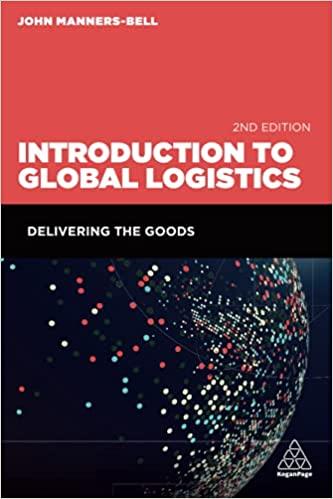Question
The North American automotive industry has been facing significant challenges in recent years as the Big Three restructure their operations to respond to increased foreign
The North American automotive industry has been facing significant challenges in recent years as the "Big Three" restructure their operations to respond to increased foreign competition, difficult economic conditions, and shifting demand as con- sumers migrate toward more fuel-efficient vehicles. In light ofthese dynamic busi- ness conditions, Ford of Canada relies heavily on organization and personnel planning processes and tools to ensure that the organization structure, internal selection practices, and succession management systems are aligned to support the future needs ofthe firm and the needs ofits employees. With a strategic focus on maintaining a "People Development Framework," succession planning is a key element ofthe organization and personnel planning function. The HR team reviews four major areas offocus in order to make better decisions about the organization's future direction for personnel requirements. In addition to assessing the impact ofexternal factors such as world events, the changing mar- ketplace, and workforce demographics, team members regularly review the opera- tional plans in place so that functional HR objectives and action plans are properly developed and aligned to meet the long-term goals ofthe business. Ongoing reviews of the organization structures are conducted to ensure that the delivery of the organization's business priorities is achieved in an efficient, flexible, and affordable manner by assessing factors such as the size of the organization, the percentage ofresources deployed at each level and function, and the attraction and retention potential of the leadership level and salary grade system. Lastly and most impor- tantly, the "people equation" is evaluated on an ongoing basis to ensure that the organization has the right people in the right positions at the right time to help the organization achieve success. Personnel development committees (PDCs) play a central role within Ford of Canada to identify and match employee capabilities to key positions to ensure appropriate bench strength is in place. Committees exist for three broad levels of the organization including senior executive, business unit management, and line management, and PDC composition includes managers from all functional busi- ness areas to ensure cross-functional opportunities can be efficiently explored and utilized for employee development. In conjunction with department managers, PDC members are charged with the responsibility of identifying employees who demonstrate outstanding leadership abilities, strong and continual learning, and superior job performance, and then matching employees to key positions. PDCs assess candidate bench strength for particular key positions or job families using a visual aid called a "T" chart. Employees immediately qualified are plotted on the horizontal section of the "T" while employees with future potential who require further development are identified in rank order in the vertical region of the tool. Using a graphic aid such as a "T" chart allows review committees and managers to see and compare bench depth across key positions; it further assists in the communication process as succession planning information moves vertically to other PD Cs as vacancies are being filled or when bench strength is being assessed. An integral component ofthe People Development Framework is the engage- ment and participation of the individual employee in his or her own professional development and career management. With consultation from their immediate supervisors, employees are engaged in the process through the completion of a Leadership Development Employee Profile (LDEP) and an Individual Development Plan (IDP) on an annual basis. The LDEP acts as an internal resume to capture individual employee information for PDC or hiring manager review that includes current position details, previous Ford position history, the employee's viewpoint on Ford, and non-Ford key accomplishments, as well as preferred developmental assignments. The IDP reinforces the need for each employee to invest in his or her own professional development and provides an opportunity for career planning activities to further develop strengths and areas of improvement in alignment with career goals and business needs. Plans are developed between an employee and supervisor that identify developmental actions that improve current assignment performance and also position the individual for his or her desired future assignments. While partnership with the supervisor is necessary for establishing the content and imple- mentation timing of an IDP, it is inherently critical that employees take personal ownership of the formation and maintenance of their own career plans for this tool to be successful. As Ford of Canada business units strive to "do more with less" in a manner that delivers an efficient, profitable, and competitive position, an assessment of key position requirements and employee leadership and technical competencies is critical to ensure that employee developmental needs and placements support the delivery of the desired business outcomes. The process tools and governance structure under the People Development Framework serves to reinforce the inherent linkage and shared responsibility between employee, manager, and PDCs in the success of the organization and of individual employees. Source: Case prepared by Ron Derhodge, Human Resources Manager, Parts Distribution Centre, Ford Motor Company of Canada Limited. QUESTION Analyze the effectiveness of Ford's succession management program. Include in your report the strengths and weaknesses ofthe model and suggestions for increasing its effectiveness.(700 - 900 words)
Step by Step Solution
There are 3 Steps involved in it
Step: 1

Get Instant Access to Expert-Tailored Solutions
See step-by-step solutions with expert insights and AI powered tools for academic success
Step: 2

Step: 3

Ace Your Homework with AI
Get the answers you need in no time with our AI-driven, step-by-step assistance
Get Started


